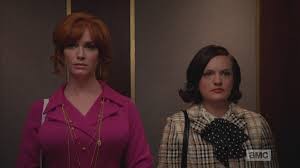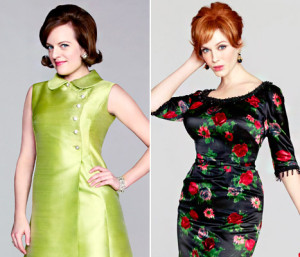I really liked AMC’s “Mad Men,” and I paid close attention to it throughout its seven (six A and six B) season run – not close enough attention to analyze it on some sort of film school dissertation-type level, but attention nonetheless.
When the show came to a conclusion on May 17, 2015, I found myself not really giving a shit about Don’s transformation into the same old thing. I found myself moderately happy that good ol’ Roger ended up with a person that challenged him to be better and was unconvinced that Betty was anything other than good ol’ Betty, even in the end.
As I reflected on the whole show and its painful, aggravating, and generally (supposedly) spot-on-to-slightly-attenuated depiction of gender inequalities complicated by race and social class, as well as blatant sexism in every corner of life, I found myself kinda sad. What did all the Sally Drapers of the world have to go through in the 80s? And what’s really changed for women today? (more on all this here)
But rather than speculate about all that, what I want to speculate about is Peggy and Joan.
(pictured: Joan and Peggy via the interwebs)
Peggy and Joan – both depicted over and over as incredibly clever, resilient, and intelligent, these two couldn’t have been more than a few years apart in age (8 – 10?), but they were light years apart because of one key factor: looks, normative perceived hotness, subjective beauty, whatever you want to call it. Therein lies a significant factor that shaped the end of each character’s show-story.
Peggy was never perceived to be bangin’ like Joan. As such, in spite of all their other similarities, Peggy had one hook she could hang her hat on: the “perceived pretty” piece she was “missing.” She had a “disadvantage” within the context of the existing system, one that she felt she was tenacious enough to work her way through. As such, Peggy could end the show still hopeful – hopeful that, if she kept working hard, the system would change, or at least accept her, happy about the romance that finally seemed to be there (Did anyone else find the pairing of her and Stan to be horribly contrived?), etc.
Joan, on the other hand, had the piece Peggy “lacked” — she had it in spades. But over and over again, she got put in her place, was passed over/around, and/or was egregiously exploited. This is not to say that Peggy didn’t experience versions of this treatment as well (as did all the women on the show), but Peggy repeatedly seemed surprised that Joan the Business Goddess got treated in such a way, whereas Joan knew it was par for the course. Joan ends the show with an awareness that, at least in her foreseeable work lifetime, shit’s not gonna change. As such, she she has to make her own game.
(pictured: Peggy and Joan, via the interwebs)
At the end of “Mad Men,” Peggy could stay in the system because the awful truth hadn’t yet been revealed to her. Joan however had directly experienced all the options. Thus, even though it was scary and even though she was making it up as she went along (Who was her business partner? Was it just a made up name?), Joan knew she had to do her own thing. There was no other course of action.
In all of “Mad Men,” my favorite story was that of Joan. It takes some kinda something to turn away from normativity and evolve, to fight and find your own steps, and to make the world your what you want it to be.
Love you, Joan! (and you too Peggy, and you three Sally)
* * *
Got a sociology question? Need some social justice informed life advice? Contact Dr. Chauntelle right here.


Joan’s company name was comprised of her maiden and married names. It was all her, no partner.
I look at the end of Peggy’s and Joan’s stories as being directly related to that first episode scene of Joan giving Peggy a tour of Sterling Cooper while instructing her on how to make it as a woman in a man’s world. For Joan, at the beginning, the work was merely a conduit to a man. That by the end of the series, she was the one who sacrificed a relationship in order to pursue meaningful work (work she no longer needed for either herself or her child), showed that she was the character who had changed the most over the course of the series. (Although Sally might have given her a run for that title, too.)
And Peggy, who spent the majority of the series sacrificing personal relationships (with boyfriends, with family and with her own child) for work, finally realized her fulfillment required both work AND relationship. Peggy and Joan were the yin and yang of the series, and performed something of a 180% flip over six seasons. I thought it was pretty marvelous writing.
Re the names, I kinda figured she was a solo enterprise, but I didn’t catch on to the combo of maiden and married name. gosh, that’s brilliant! (and perfect) thank you for clarifying.
And yes re everything else you said about Joan/Peggy and the series as a whole – it was such a great and painful journey.